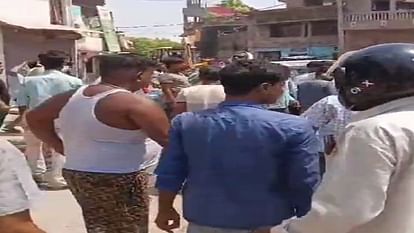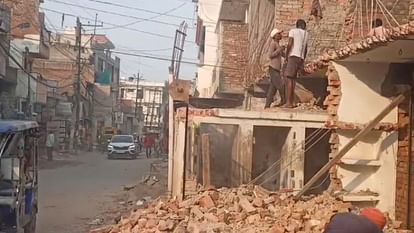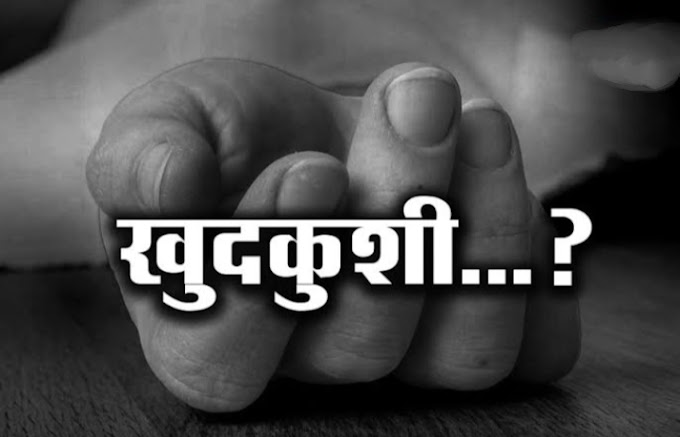According to the Puranas, Lord Ganesha was born on this day. Lord Ganesha is worshiped on Ganesh Chaturthi. Big statues of Lord Ganesha are installed at many important places. These idols are worshiped for nine days.
While celebrating Ganesh Chaturthi, people worship Lord Ganesha. Ganesha is the most worshiped deity in Hindu religion. This festival is especially celebrated in Maharashtra. However, now it is being celebrated in almost all the states of India. On Ganesh Chaturthi, people worship the Lord of knowledge and prosperity with full devotion and reverence. Lord Ganesha is considered the god of intelligence. In Hindu religion, Lord Ganesha is worshiped before starting any new work. It is believed that after worshiping Lord Ganesha, the work started will be completed in any case. Ganesha, son of Lord Shiva and Mother Parvati, is also called the remover of obstacles.
The word Ganesh means the one who is the God i.e. the master of all living beings. Lord Ganesha is also called Vinayak. The word Vinayak means a special hero. In Vedic belief, the deity whose worship begins at the beginning of all work is Vinayak. The festival of Ganesh Chaturthi has spiritual and religious significance. It is believed that Lord Ganesha is the destroyer of obstacles and creates an auspicious environment. The festival of Ganesh Chaturthi is celebrated with great enthusiasm all over India including Maharashtra, Goa, Telangana, Kerala and Tamil Nadu. But especially in Maharashtra, Ganeshotsav is celebrated with great pomp and show for 10 days. This festival is also called Ganeshotsav or Vinayak Chaturthi.
According to the Puranas, Lord Ganesha was born on this day. Lord Ganesha is worshiped on Ganesh Chaturthi. Big statues of Lord Ganesha are installed at many important places. These idols are worshiped for nine days. A large number of people come to see the Ganesh idols. After nine days, Ganesh idols are immersed in the sea, river, pond. Two-three months before the festival of Ganesh Chaturthi, artisans start making clay idols of Lord Ganesha. During Ganeshotsav, very beautiful idols of Lord Ganesha in different postures are found in the markets. On the day of Ganesh Chaturthi, people bring these idols to their homes. At many places, pandals are seen decorated for 10 days where the idol of Lord Ganesha is installed. Every pandal has a priest who performs the puja with four methods during this period. First of all, before installing the idol, consecration is done. Many types of sweets are offered to him as Prasad. Ganesh ji was very fond of Modak. Which are made from rice flour, jaggery and coconut. In this puja, laddus are offered to Ganapati.
There are many stories associated with this festival, out of which the story related to his parents Mother Parvati and Lord Shiva is the most popular. In Shivpuran, in the fourth part of Rudrasamhita, it is described that before taking bath, Mother Parvati had created a child from her filth and made him her gatekeeper. When Lord Shiva wanted to enter the building, the child stopped him. On this, Lord Shankar got angry and cut off the head of that child with his trident. Parvati became angry with this. The frightened gods calmed down Jagadamba by praising him on the advice of Devarshi Narad. On the instructions of Lord Shiva, Vishnuji cut off the head of the first creature (elephant) found in the north direction and brought it back. Mrityunjay Rudra placed that head of Gaja on the torso of the child and revived him. Mother Parvati embraced that Gajmukh child to her heart with great joy. Brahma, Vishnu and Mahesh declared that child as the head of all and gave him the boon of being the foremost worshipper.
The great revolutionary Bankim Chandra Chatterjee wrote a song named Vande Mataram in 1882. The British had banned it and issued an order to put the singers in jail. Due to these two things, there was a lot of resentment among the people towards the British. To eliminate the fear of the British among the people and to oppose this law, the great freedom fighter Lokmanya Tilak established the Ganpati Utsav and for the first time the Ganpati Utsav was organized in Shaniwarwada, Pune. Ganesh Utsav played a very important role in the country's independence movement. In 1894, the British had made a law in India called Section 144, which is still applicable even today after so many years of independence. Under this law, more than 5 people could not assemble at any place. Nor could they form a group and protest anywhere.
Before 1894, people used to celebrate Ganpati festival in their homes. But after 1894 it started being celebrated collectively. Thousands of people gathered at the Ganpati festival in Shaniwarwada, Pune. Lokmanya Tilak warned the British that if they celebrated Ganpati festival, the British police would arrest them and show them. According to the law, the British police could arrest only a crowd gathered at a political event. But not the crowd gathered at any religious function.
For the first time, Ganpati Utsav was celebrated for 10 days in Shaniwarwada, Pune from 20 October 1894 to 30 October 1894. Lok Manya Tilak used to invite some big leader every day to give a speech there. In 1895, 11 Ganpatis were established in Shaniwarwada, Pune. The next year this number crossed 31 and the next year this number crossed 100. Then gradually the Ganpati festival spread to other big cities of Maharashtra like Ahmednagar, Mumbai, Nagpur, Thane. Every year thousands of people used to gather in the Ganpati festival and big leaders used to give it a color of nationalism. In this way, people's enthusiasm for Ganpati festival increased and consciousness towards the nation increased.
In 1904, Lokmanya Tilak told the people that the main objective of Ganpati festival was to achieve independence. We have to achieve independence and drive out the British from India. Without independence, Ganesh Utsav will have no significance. Then for the first time people understood the objective of Lokmanya Tilak very seriously. The objective of social revolution was behind making Ganesh Utsav a folk festival by Lokmanya Tilak during the independence movement. Lokmanya Tilak had started this festival to bridge the gap between Brahmins and non-Brahmins, which later became an example of unity.
The purpose with which Lokmanya Tilak started the Ganesh Utsav is becoming so meaningful today. Today, Ganeshotsav is celebrated with more pomp and show across the country than ever before. But today in Ganeshotsav there is more ostentation. There seems to be a lack of mutual goodwill and brotherhood. Today the pandals of Ganesh Utsav have become competitive with each other. The inspiration behind Ganeshotsav is becoming distant and there is little unity left among those who celebrate it. This time we should once again unite and celebrate Ganeshotsav with so much joy and pomp that unity and brotherhood can increase in the society. Only then will our worship be truly meaningful.





















